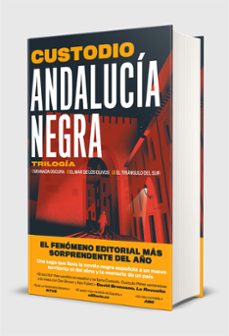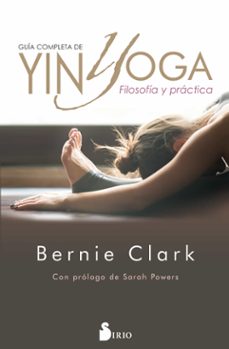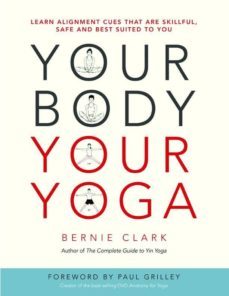Imprescindibles
Más vendidos Libros más leídos eBooks más leídos Todos los libros Todos los libros Autores destacados Series y sagas
Recomendados Libros recomendados Autores destacados Libros que inspiran Vidas con historia LGTBIQ+ English books
Ficción
Literatura Contemporánea Estudios literarios Clásicos Cuentos Poesía Teatro Libros de bolsillo Sagas literarias
Géneros literarios Novela romántica y erótica Novela negra Novela histórica Narrativa fantástica Novela de ciencia ficción Novela de terror Narrativa de humor Narrativa de viajes
No Ficción
Ciencias y tecnología Biología Ciencias Ciencias naturales Divulgación científica Informática Ingeniería Matemáticas Medicina Salud y dietas Formación Idiomas Estilo de vida Libros de Cocina Guías de viaje Narrativa de viajes Deportes Libros de Juegos Manualidades
Humanidades Autoayuda y espiritualidad Ciencias humanas Derecho Economía y Empresa Psicología y Pedagogía Filosofía Sociología Filología Biblioteconomía Estudios filológicos Estudios lingüísticos Estudios literarios Historia y crítica de la Literatura
Infantil
Juvenil
#Jóvenes lectores Narrativa juvenil Clásicos adaptados Libros Wattpad Libros Booktok Libros de influencers Libros de Youtubers Libros Spicy Juveniles Libros LGTBIQ+ Temas sociales Libros ciencia ficción Libros de acción y aventura Cómic y Manga Juvenil Cómic Juvenil Manga Shonen Manga Shojo Autores destacados Jennifer L. Armentrout Eloy Moreno Nerea Llanes Hannah Nicole Maehrer
Libros de fantasía Cozy Fantasy Dark academia Hadas y Fae Romantasy Royal Fantasy Urban Fantasy Vampiros y hombres lobo Otros Misterio y terror Cozy mistery Policiaca Spooky Terror Thriller y suspense Otros
Libros románticos y de amor Dark Romance Clean Romance Cowboy Romance Mafia y amor Romance dramatico Romance dramatico Romcom Sport Romance Otros Clichés Enemies to Lovers Friends to Lovers Hermanastros Slow Burn Fake Dating Triángulo amoroso
Cómic y Manga
Novela gráfica Novela gráfica americana Novela gráfica europea Novela gráfica de otros países Personajes, series y sagas Series y sagas Star Wars Superhéroes Cómics DC Cómics Marvel Cómics otros superhéroes Cómics Valiant
eBooks
Literatura Contemporánea Narrativa fantástica Novela de ciencia ficción Novela de terror Novela histórica Novela negra Novela romántica y erótica Juvenil Más de 13 años Más de 15 años Infantil eBooks infantiles
Humanidades Autoayuda y espiritualidad Ciencias humanas Economía y Empresa Psicología y Pedagogía Filosofía Historia Historia de España Historia Universal Arte Cine Música Historia del arte
Ciencia y tecnología Ciencias naturales Divulgación científica Medicina Salud y dietas Filología Estudios lingüísticos Estudios literarios Historia y crítica de la Literatura Estilo de vida Cocina Guías de viaje Ocio y deportes
Bernie Clark
Recibe novedades de BERNIE CLARK directamente en tu email
Filtros
Del 1 al 4 de 4
Editorial Sirio 9788417399474
El Yin yoga forma parte de la tradición original del Hatha yoga. En su versión moderna, combina el yoga más ancestral con las prácticas daoístas chinas y la ciencia occidental, para mejorar nuestra salud a diversos niveles. Las secuencias trabajan distintas partes del cuerpo y activan determinados organos y centros de energia. Las posturas, o asanas, se mantienen de forma prolongada otorgando asi el tiempo necesario para conectar con los aspectos mas meditativos de la practica, y movilizando y fortaleciendo las articulaciones, los ligamentos y las redes fasciales internas. La guia completa de Yin Yoga de Bernie Clark es la obra de referencia, a nivel internacional, sobre esta disciplina. En ella, el lector encontrara informacion fundamental sobre que es y como se practica; un repaso de casi treinta posturas con la correspondiente explicacion de sus beneficios; claves para entrar y salir de ellas; cuales son sus contraindicaciones y las advertencias a tener en cuenta.Una obra imprescindible para los amantes del yoga.
Ver más
Tapa blanda
WILD STRAWBERRY 9780968766538
Yoga is big business today. This ancient spiritual teaching has been transformed into a modern physical practice focused on health and happiness rather than the ancient goal of spiritual liberation. Along with this focus on the physical has arisen a desire by yoga teachers and students to learn more about the body and to understand how yoga works. Unfortunately, virtually all anatomical training and books being offered to the yoga community focus solely on a muscular view. This limited perspective prevents a full understanding of how yoga works and, as a consequence, limits the effectiveness of the practice, and can even promote trying too hard, going too far in the physical practice, creating injury and pathology.Your Body, Your Yoga has been written to broaden the understanding of what causes our limitations to movement, and to highlight the unique structure of the body that each student has. Human variation is a critically important realization for all therapeutic interventions, whether in a yoga classroom or in a doctor''s office. Every body is different and this difference makes all the difference in how one should practice his or her yoga.Unfortunately, most yoga training regarding anatomy and asana practice is based upon the unrecognized assumption that everyone is the same and we can all do every posture if we just try hard enough and long enough with proper attention to alignment. This has created an aesthetic focus in yoga practice that is unwarranted and unskillful. This book will help to educate teachers and students that an aesthetic approach to yoga is unproductive and often dangerous. However, a functional approach, based upon both an understood intention and a knowledge of how the body (your body!) works, is far more likely to lead to optimal health.
Ver más
Tapa blanda
WILD STRAWBERRY 9780968766583
This second edition of the best sellingThe Complete Guide to Yin Yoga provides an in-depth look at the philosophy and practice of Yin Yoga with illustrated sections on how to practice Yin Yoga, including detailed descriptions and photographs of over 30 Yin Yoga asanas. This is an updated version of the book that has become the go-to resource for Yin Yoga teachers all over the world and has been required reading in many teacher training programs. All forms of yoga can provide benefits physically, emotionally, and mentally, however Yin Yoga works the deeper levels of the body/heart/mind: the yin tissues of fascia, tendons, ligaments, joints and bones, as well as the energetic channels of the meridians, nerves and blood system. One big difference noticed by students of Yin Yoga is the long-held, passive nature of the posture, which gives time for a deeper journey to unfold, a journey into the meditative aspects of yoga, a bridge to living life mindfully. The second edition includes-a more functional approach to the practice of yoga, emphasizing the concept of targeted areas; the importance of stress in reducing fragility and building antifragility; understanding the nature of creep and the importance of counterposes, with a revised list of effective counterpostures; many new photographs of the postures and their variations for different body types; a more current overview of the physiology of tissues and the energy body reflecting new understanding in the science of fascia and cellular signaling; and many other enhancements. As in the first edition, the book presents comprehensive information on how to do the practice, including how to get into and out of the pose, contraindications and warnings for those who may have trouble with particular aspects of the posture, and other important information. Why we do the practice is discussed by looking at its benefits in three main sections: the physiological, energetic and mental/emotional benefits.
Ver más
Tapa blanda
WHITE CLOUD PRESS 9781935952503
The Yin Yoga Book provides an in-depth look at the philosophy and practice of Yin Yoga. Clark''s fascinating and comprehensive book is divided into three sections:(I) What is Yin Yoga; (II) The Benefits of Yin Yoga, including discussions of anatomy, the energy body, and the heart and mind body; (III) The Practice of Yin Yoga, including illustrated descriptions of 30 yin yoga asanas (poses).Yin Yoga has the same goals and objectives as any other school of yoga; however, it directs the stimulation normally created in the asana portion of the practice deeper than the superficial or muscular tissues (the yang tissues). Yin Yoga generally targets the connective tissues of the hips, pelvis, and lower spine.Suitable for almost all levels of students, Yin Yoga is a perfect complement to the dynamic and muscular (yang) styles of yoga that emphasize internal heat, and the lengthening and contracting of our muscles.
Ver más
Tapa blanda
Del 1 al 4 de 4






























